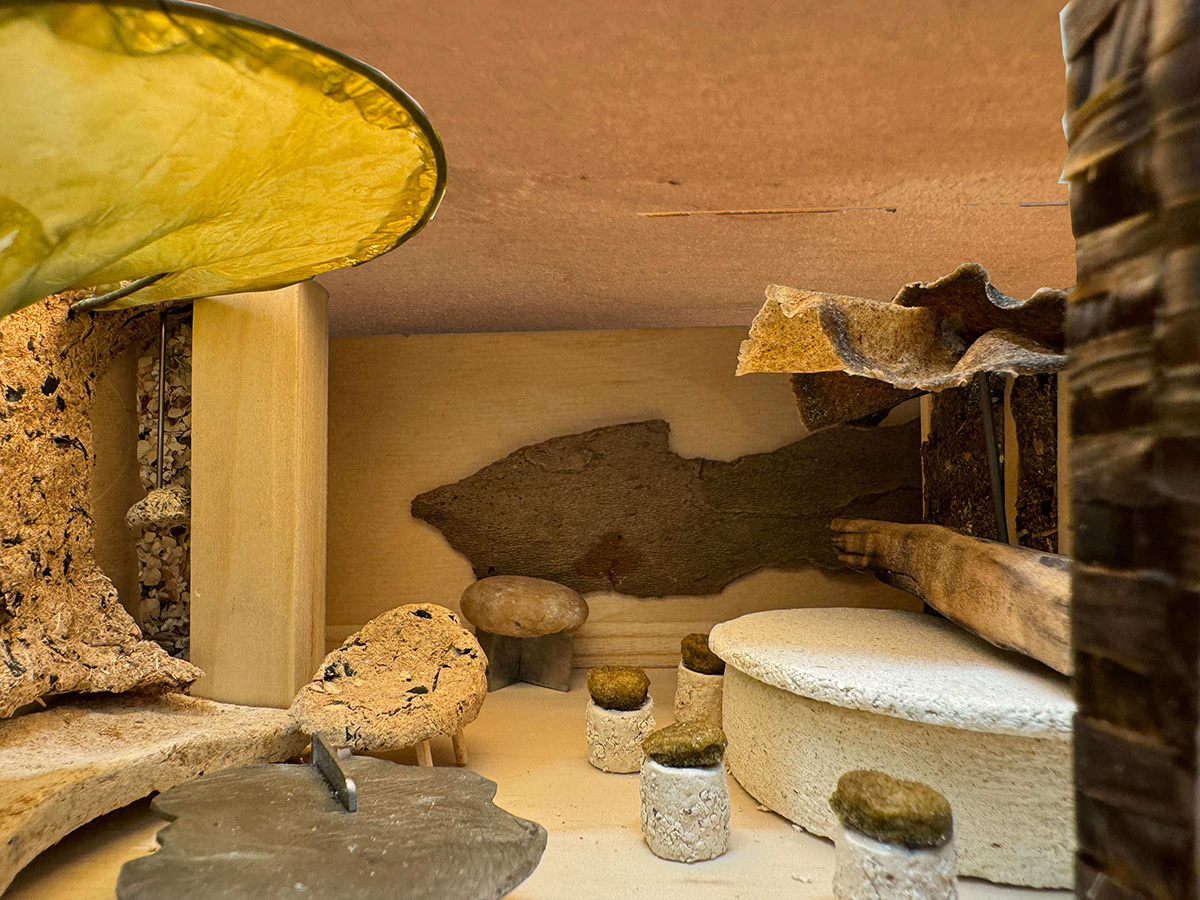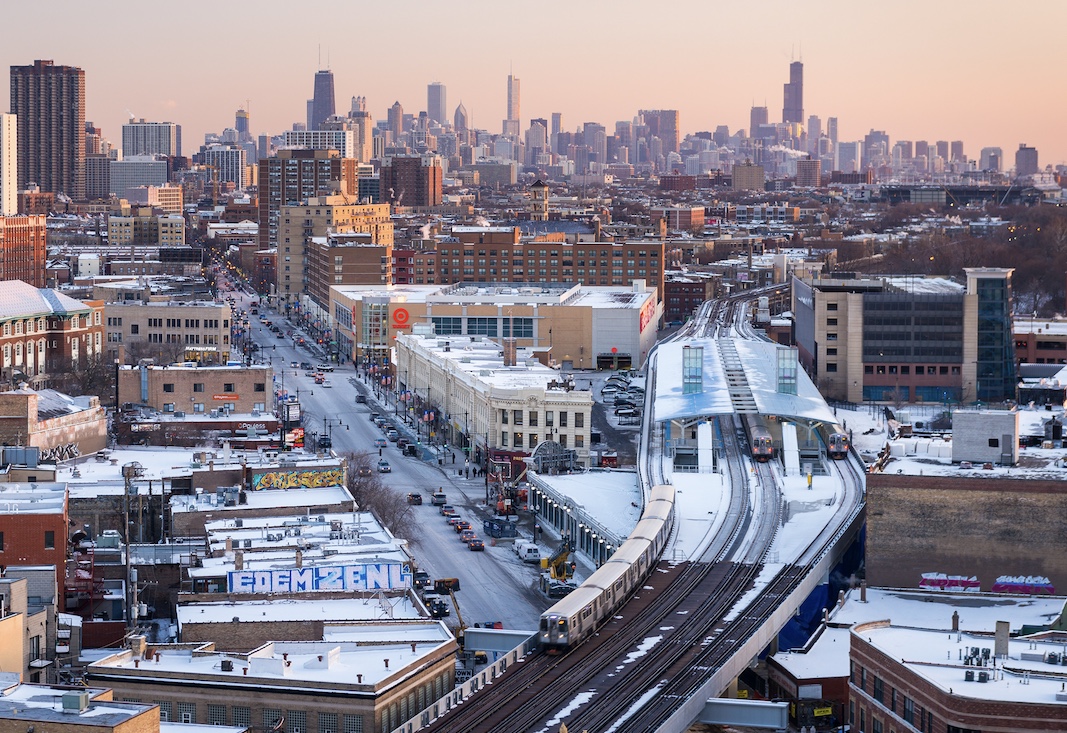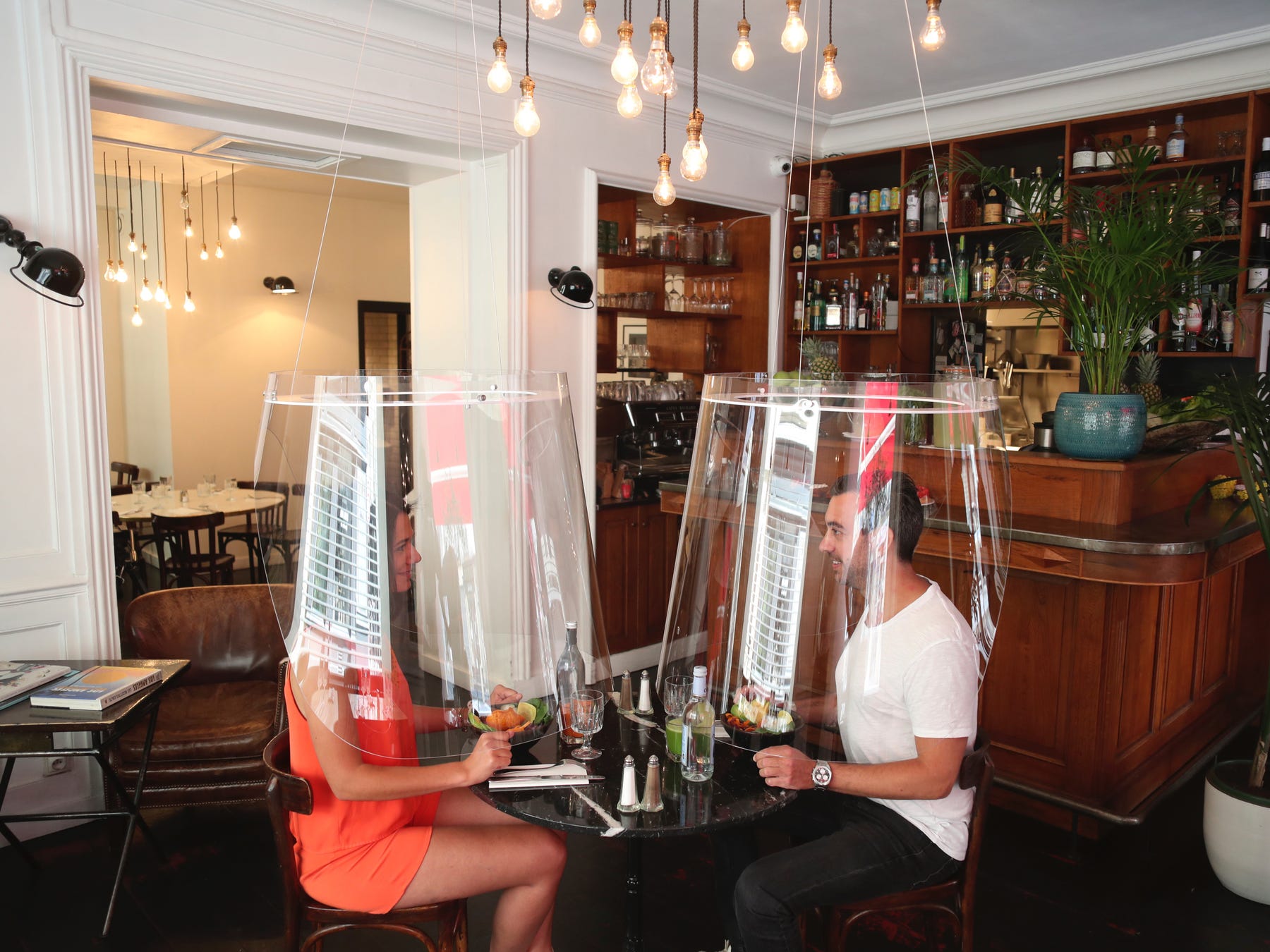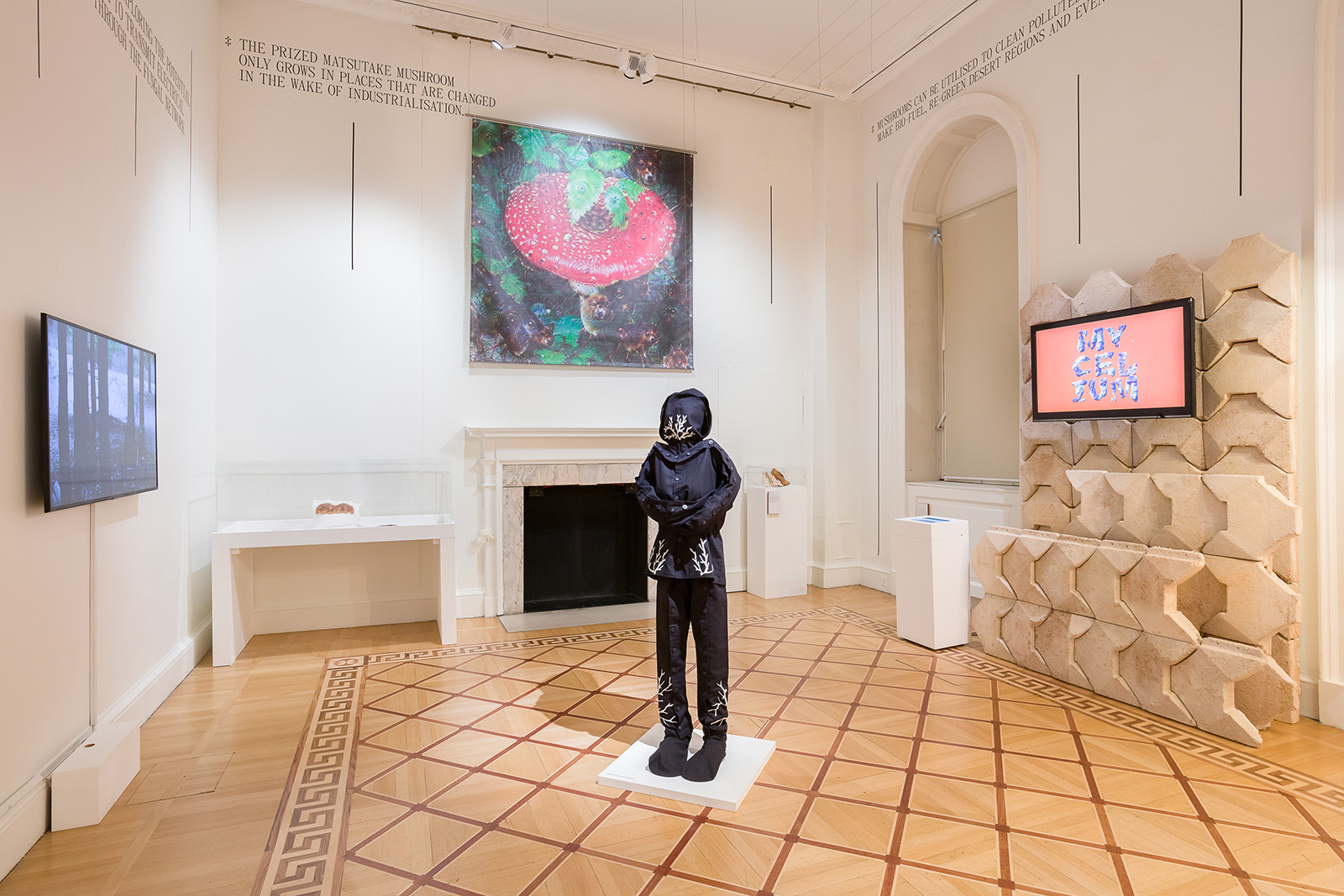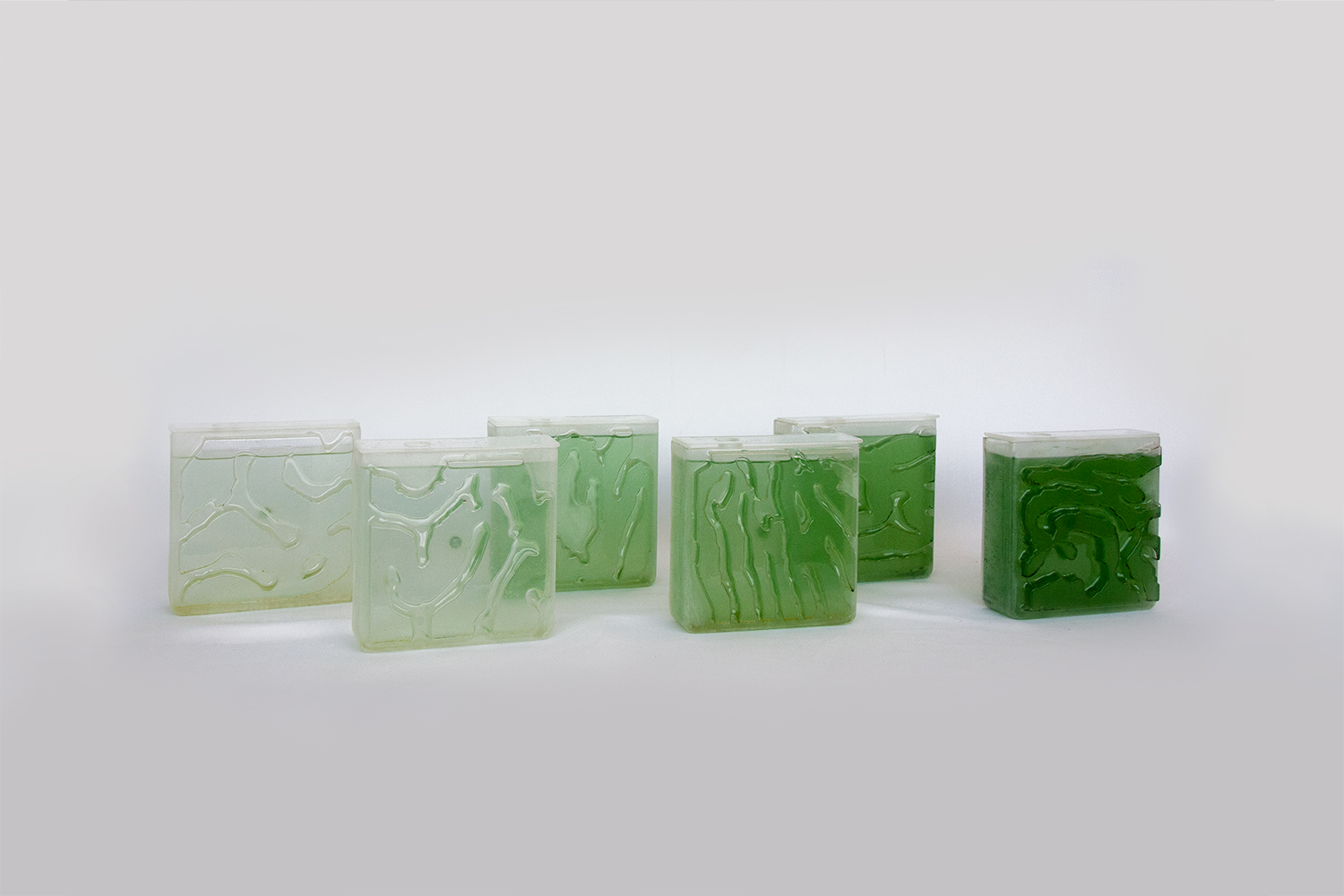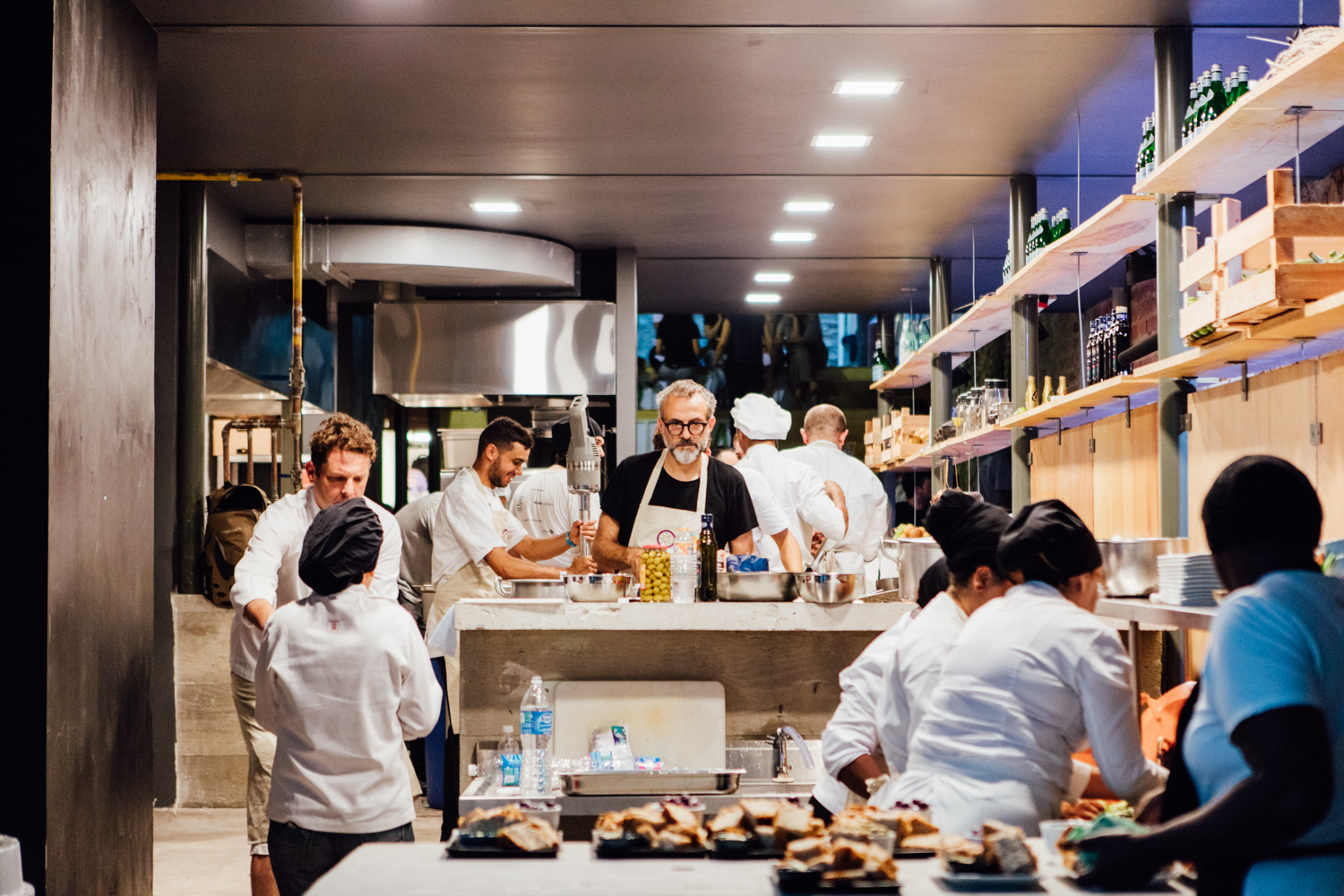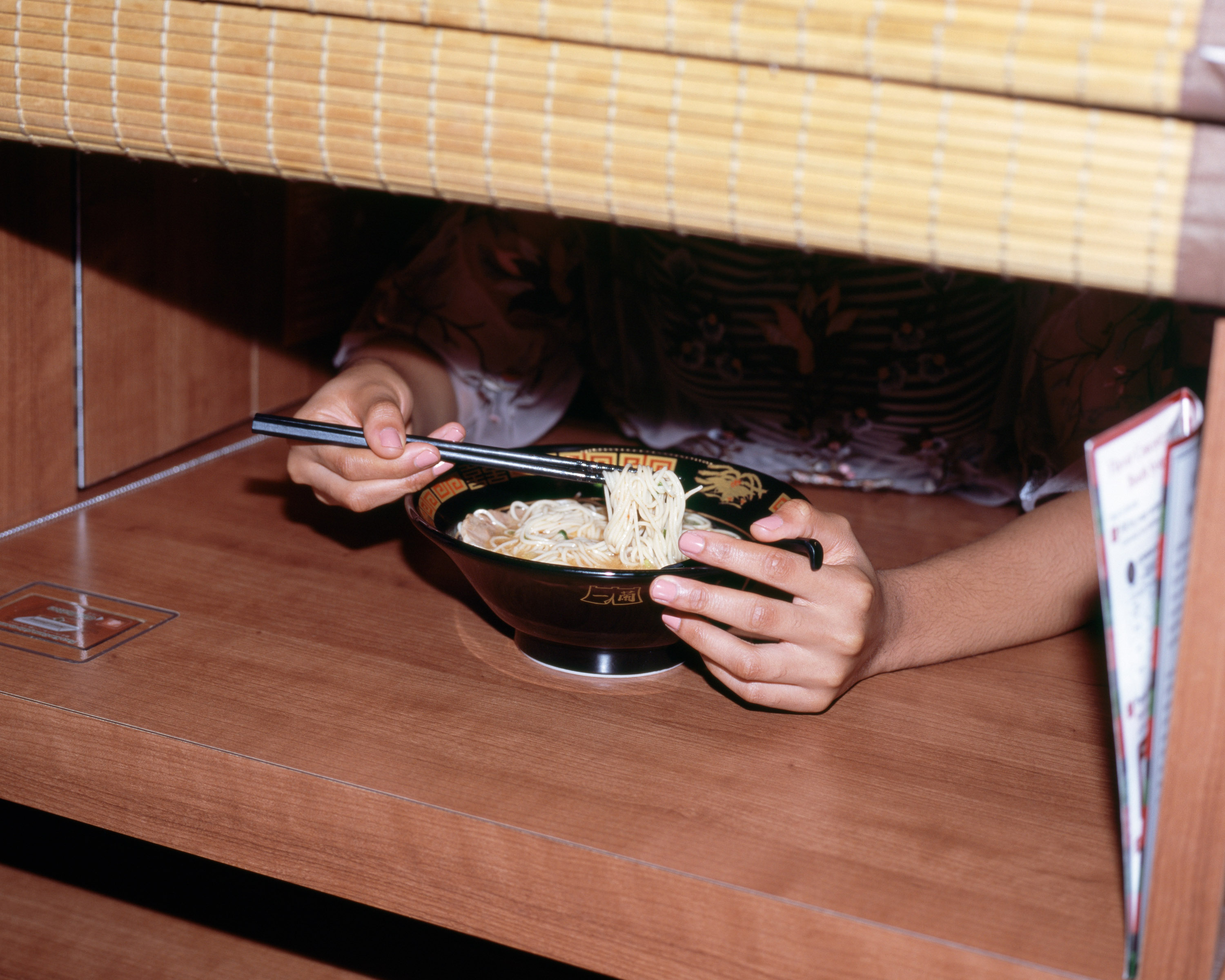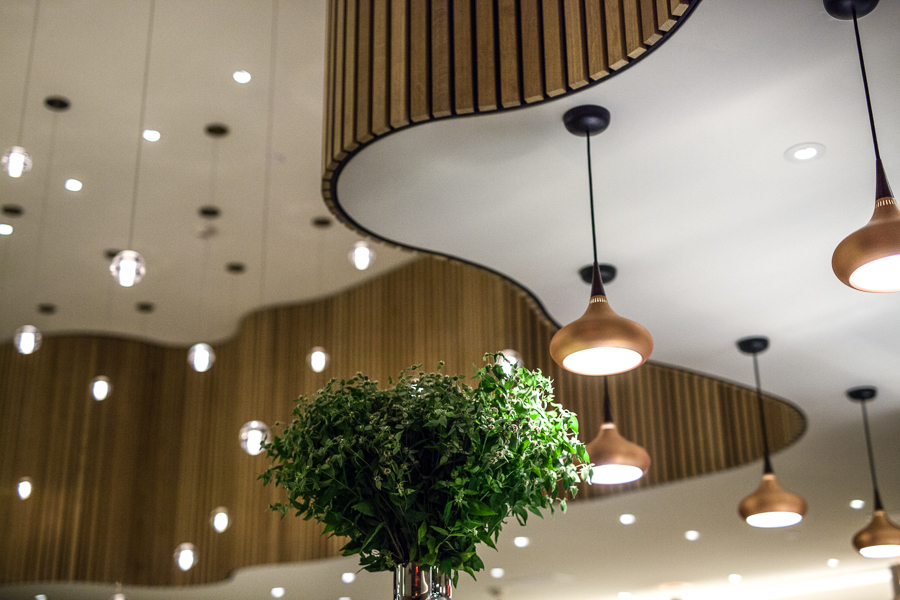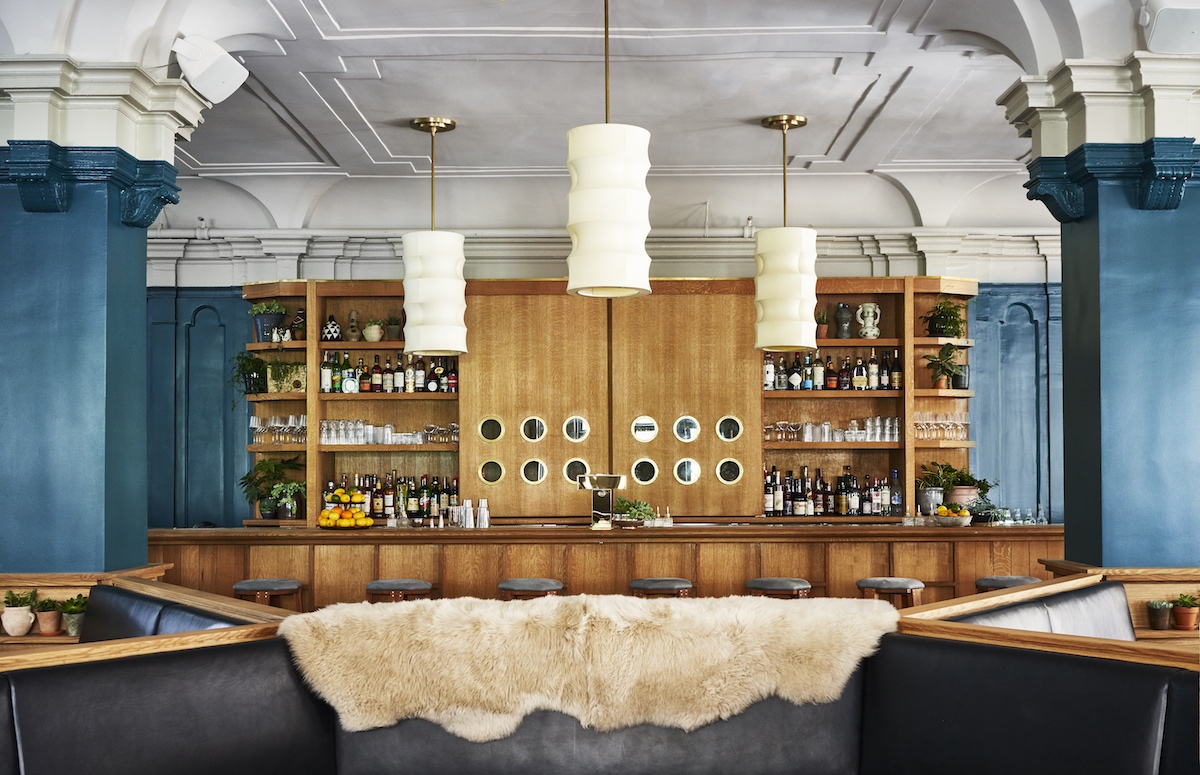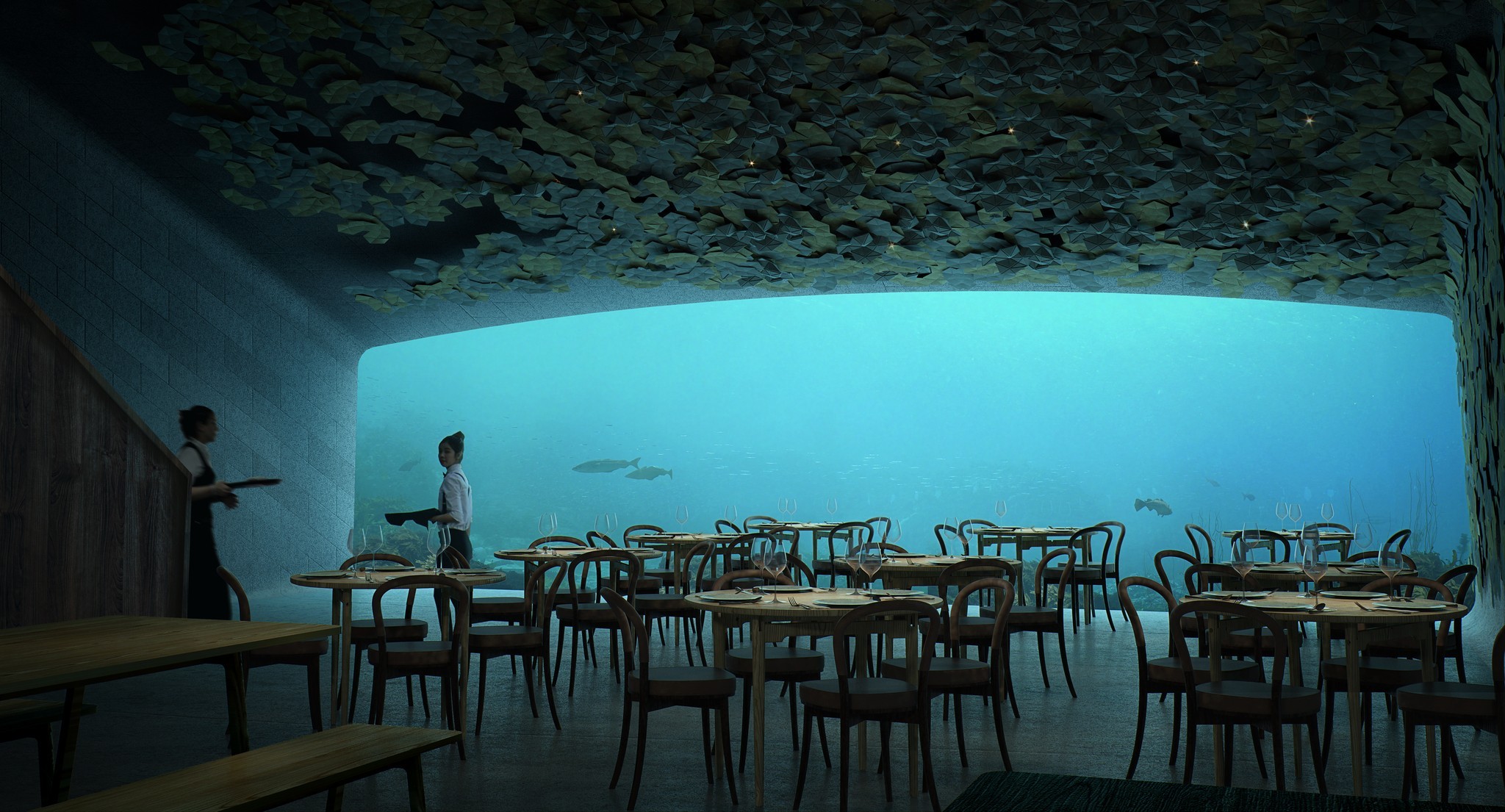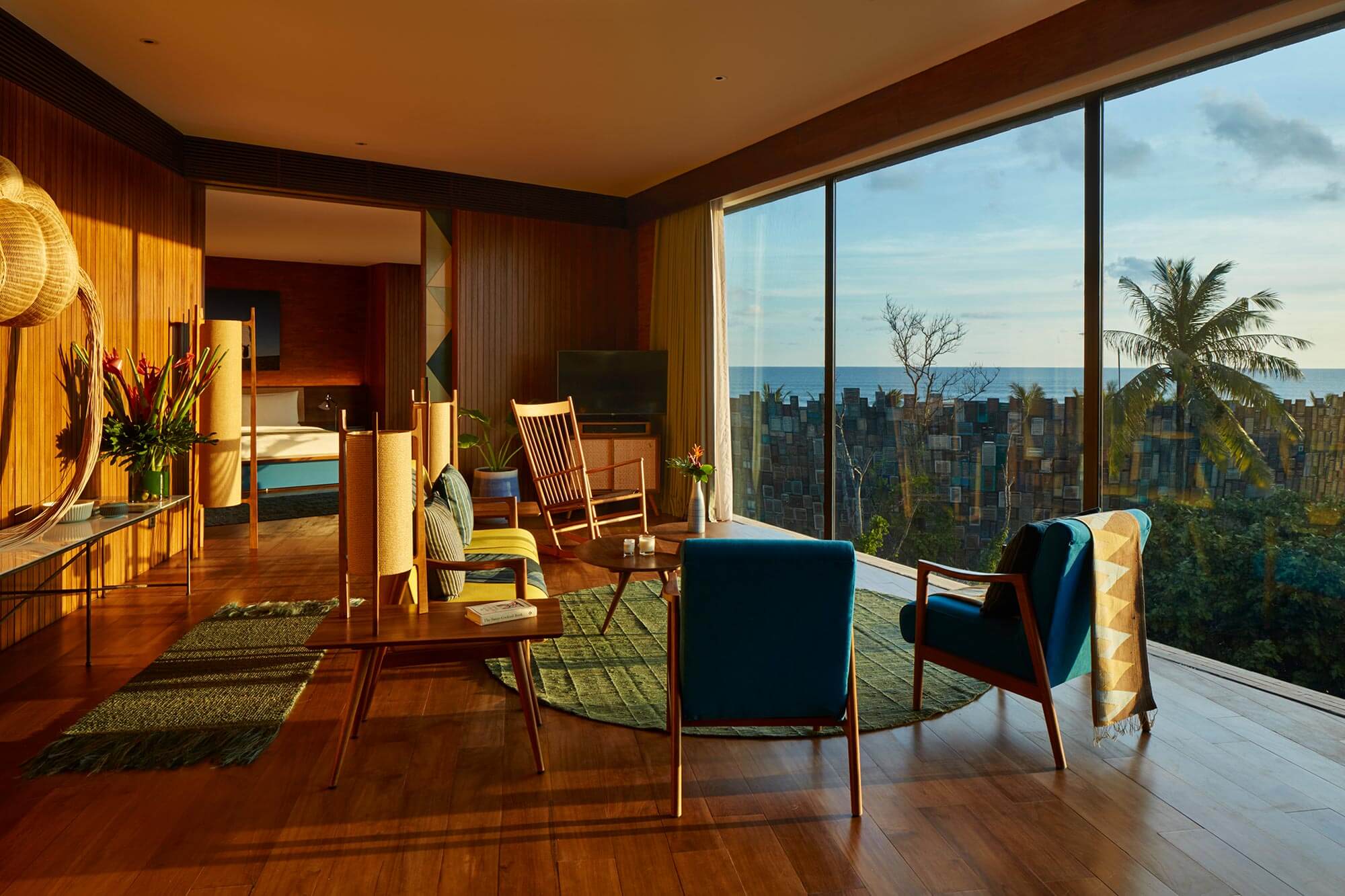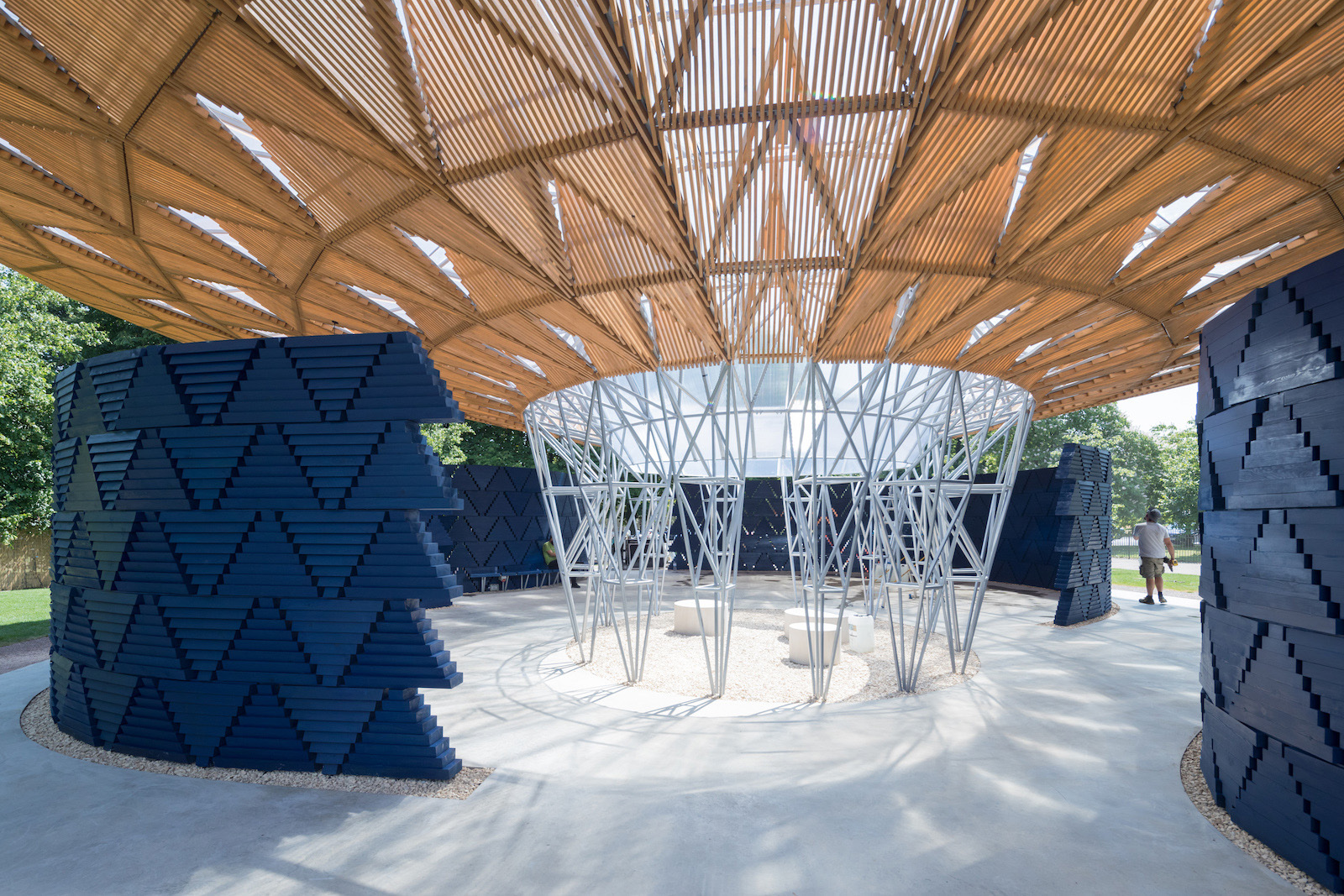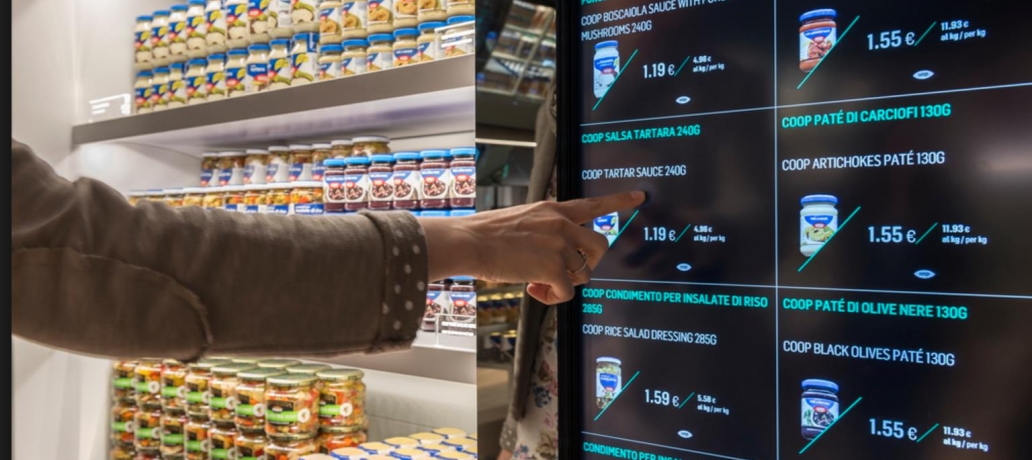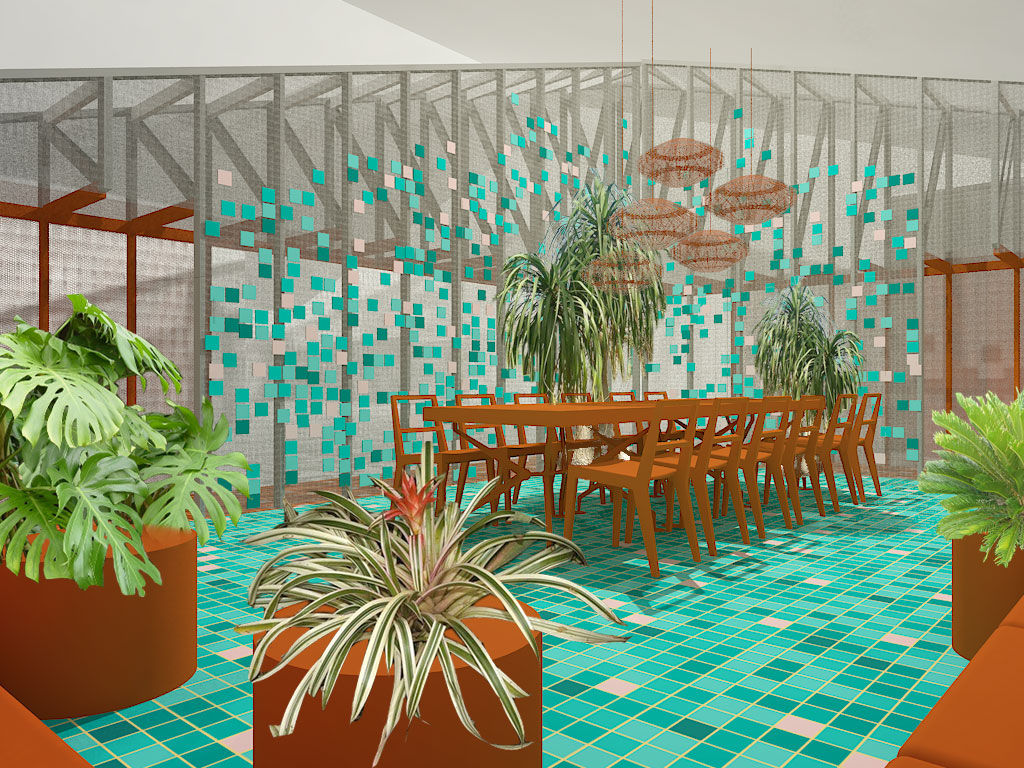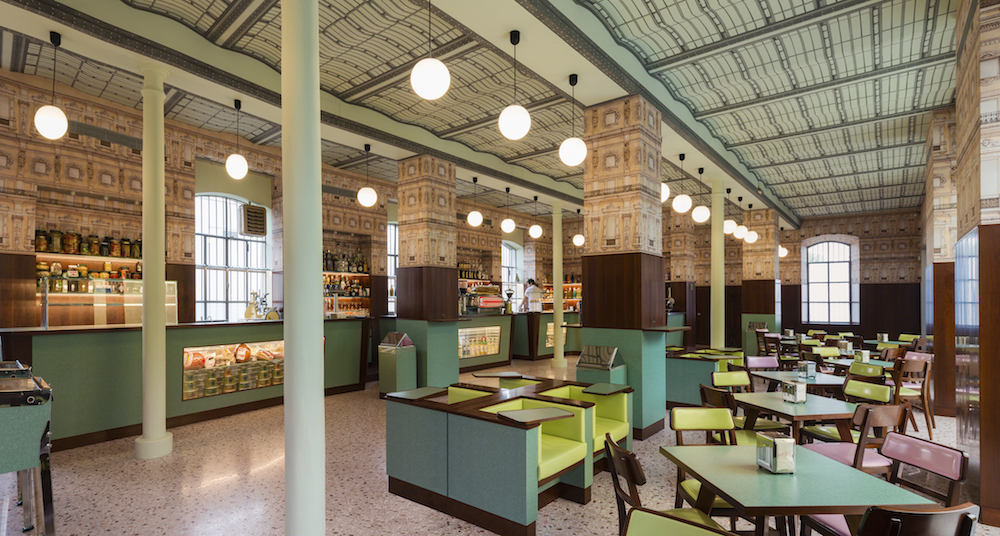Read more from In Service, our monthly look at the future of hospitality from innovators around the world.
HOME STUDIOS started, aptly enough, in a home. Having flexed their design—and construction—prowess for East Village cocktail bar Elsa, in 2009 brothers Evan and Oliver Haslegrave moved into a Greenpoint loft and officially set up shop. They used their raw living space as a showroom for their elaborate custom work and penchant for experimentation, and soon enough, Brooklyn took note. They quickly became the creative outfit behind several cult-loved neighborhood establishments, from rustic pizzeria Paulie Gee’s to the casually classy late-night dance spot Manhattan Inn. HOME STUDIOS’ work is now frequently spotted on both sides of the East River, as well as beyond; recent interiors projects include Seaworthy, the oyster bar at the Ace Hotel in New Orleans, and Gwen, chef Curtis Stone’s Los Angeles restaurant and butcher shop for which the studio received a 2017 James Beard Foundation Award nomination for Outstanding Restaurant Design (75 Seats and Over). And the studio is currently renovating a 110-room hotel in Memphis, Tennessee.
With custom carpentry and lighting at the core of HOME STUDIOS projects, Oliver Haslegrave has followed a natural progression in creating a line of furniture called Homework, which debuts this Friday at the Sight Unseen fair OFFSITE during NYCxDESIGN. We caught up with Oliver to get a little background on HOME STUDIOS’ overall approach and how they create such intimate spaces while pushing the boundaries of hospitality through contemporary design.
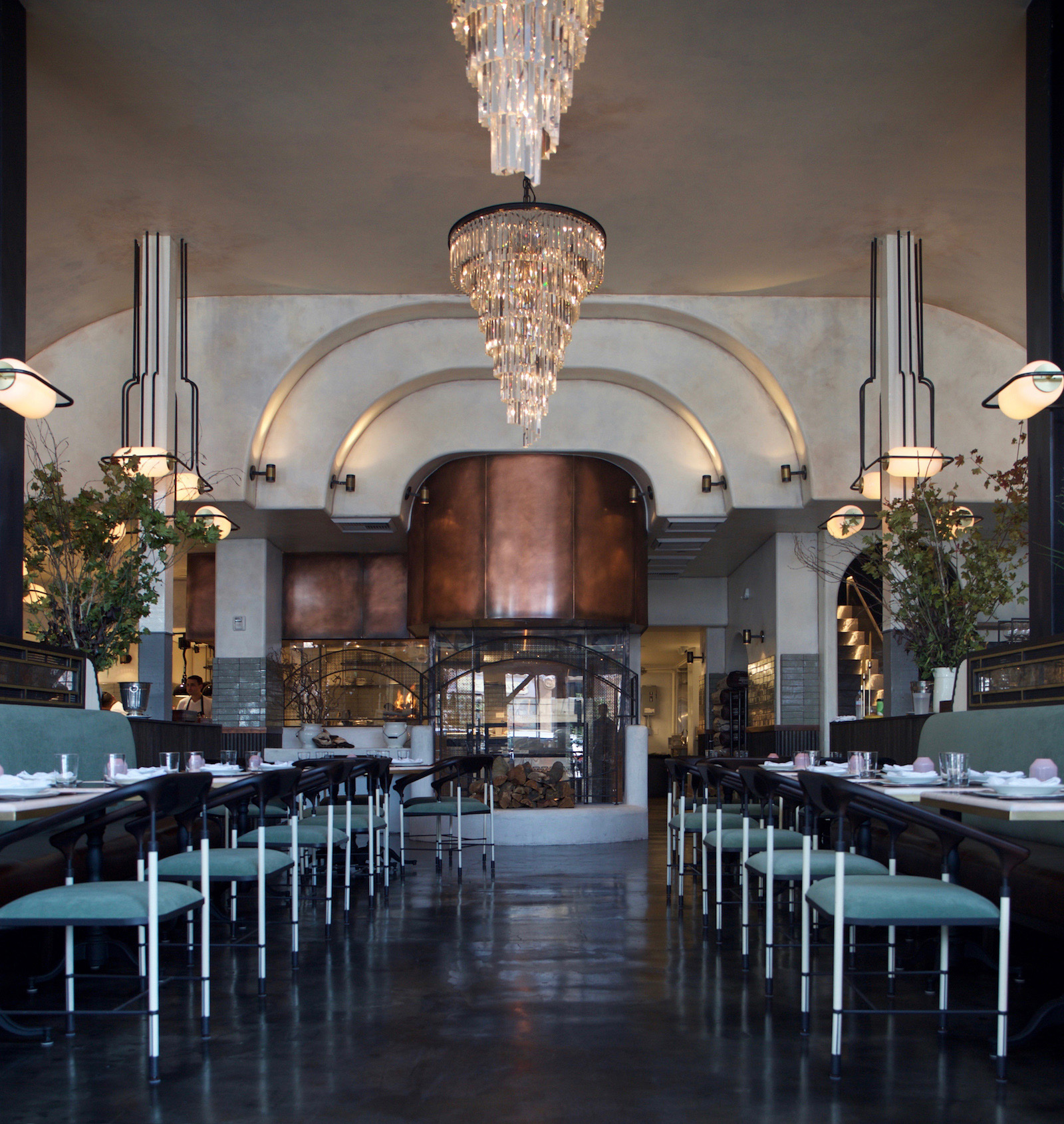 Gwen Restaurant and Specialty Butcher Shop designed by HOME STUDIOS. The Los Angeles-based project was is nominated for a 2017 James Beard Foundation Award for Outstanding Restaurant Design (75 Seats and Over).
Gwen Restaurant and Specialty Butcher Shop designed by HOME STUDIOS. The Los Angeles-based project was is nominated for a 2017 James Beard Foundation Award for Outstanding Restaurant Design (75 Seats and Over).
MOLD: When did you open your studio?
Oliver Haslegrave: 2009.
How big is your team? What are people’s roles?
We are currently 12 total: myself, a director of operations, a design director and three designers, two project managers and three people on the fabrication side.
How would you describe your design ethos?
I guess the shorthand is that it’s kind of an alchemy of the enduring and the abstract. We do a lot of research and are very invested in both the history of architecture and interior design, and the history of whatever neighborhood or building or city we happen to be working in, but we’re equally experimental in doing as much custom work as we can and pushing the envelope in terms of materials and forms. Where those two intersect is where we like to live. Our principles are experimentation and craft, because we’ve done a lot of the build ourselves, and then community because—especially with hospitality projects—you’re creating a community every time.
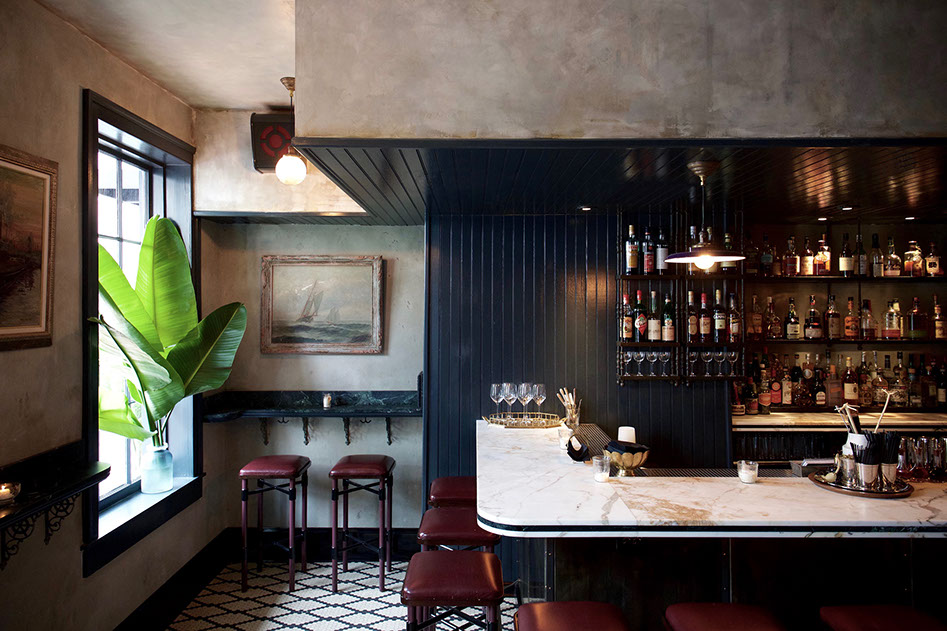
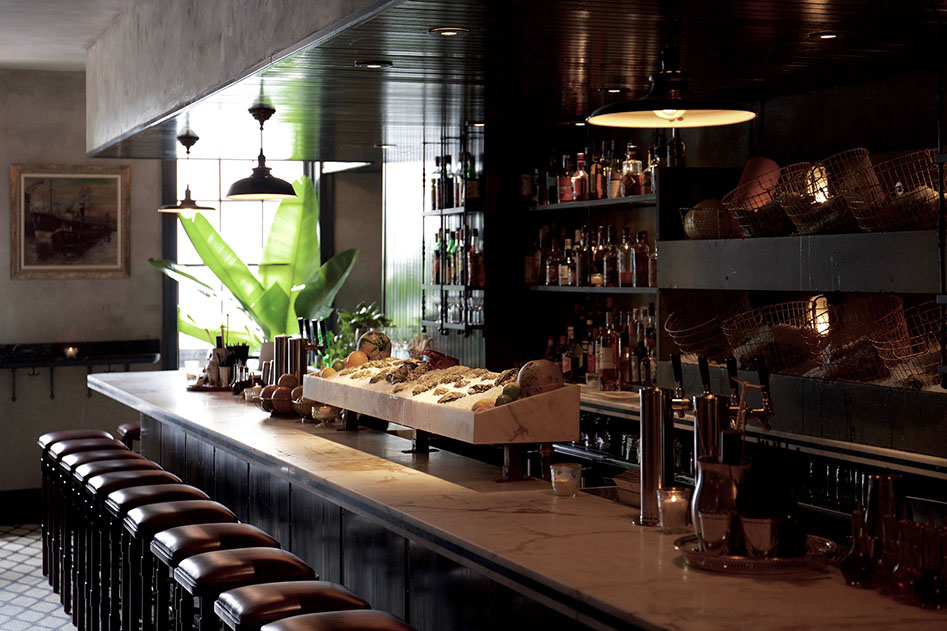 Seaworthy, in New Orleans, includes a dramatic marble raw seafood display built into the bar.
Seaworthy, in New Orleans, includes a dramatic marble raw seafood display built into the bar.
What are the first steps in your design process?
We do a narrative mood board that’s pretty in-depth, then we do a schematic of the whole floor plan, which includes a furniture plan and a lighting plan, then a full 3D model with materials and renders and then the construction documents; we handle or oversee all of the custom work and we do construction administration throughout the build.
We pay a lot of attention to flow; back of house, front of house, guest experience and how all of that interacts in terms of the layout, and then lighting levels, sound…basically putting yourself in the position of the guest or bartender, floor manager, chef. We’re trying to make the most pleasant and exciting experience for everyone.
How do you define hospitality in your work?
The whole thing is emotional. You go back to the same bar or restaurant because you like the vibe there, you like the experience, you just like the energy of it. So there’s the much more technical side and then there’s the emotional side which gets into the materials and the finishes and the more designed or architectural elements.
All of this serves the same goal which is: everyone who comes in has the best experience, the energy is as good as it can be and then people are attracted to that and want that to become their community. We approach it by the end goal being to create a community and you do that by creating this energy and you do that by really paying attention to every little detail.
What is most important to you when designing any project?
We’re hired by a client to design their bar or restaurant or residence, so our goal is always to give them the best possible result and I think that means creating the best feeling or energy.
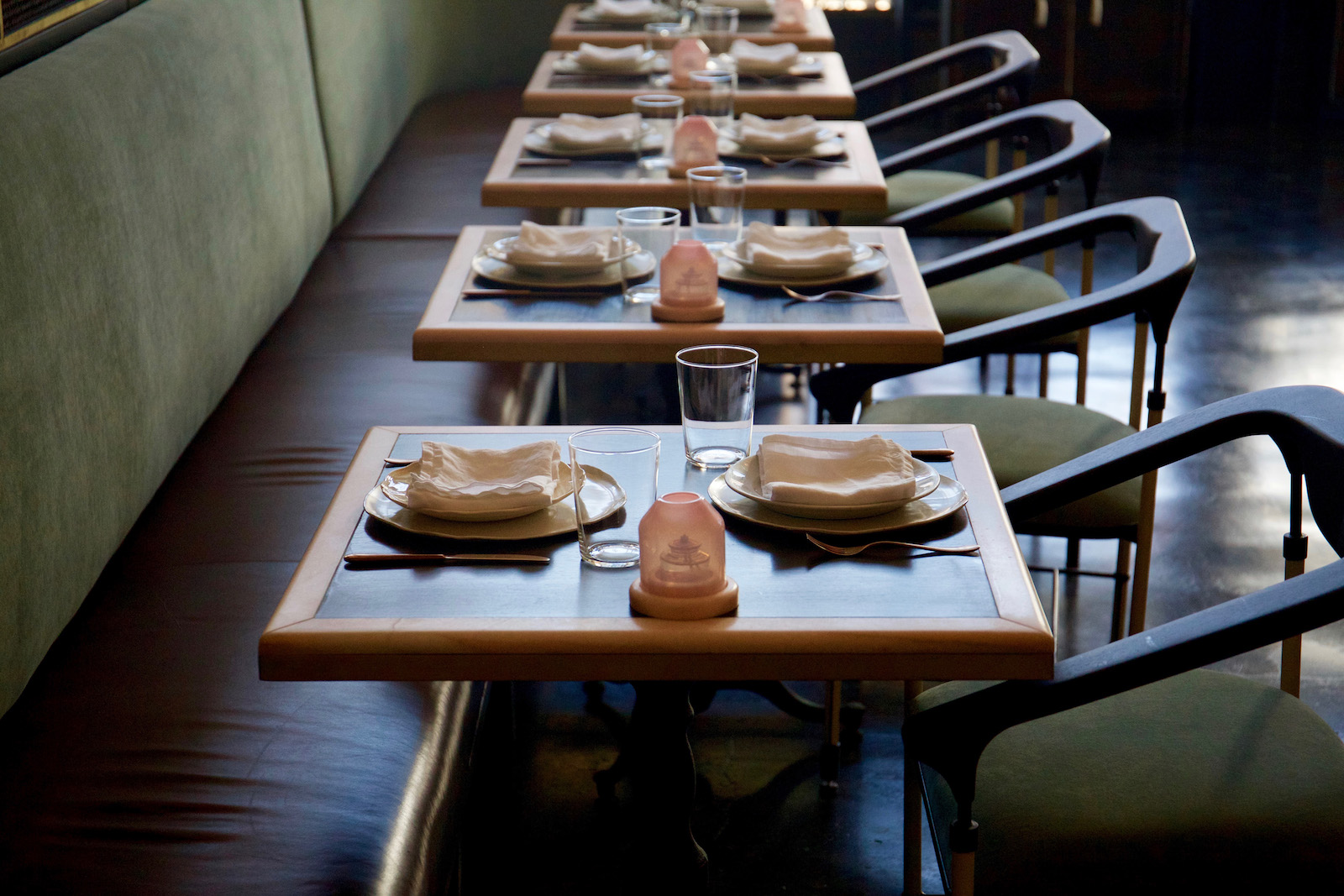
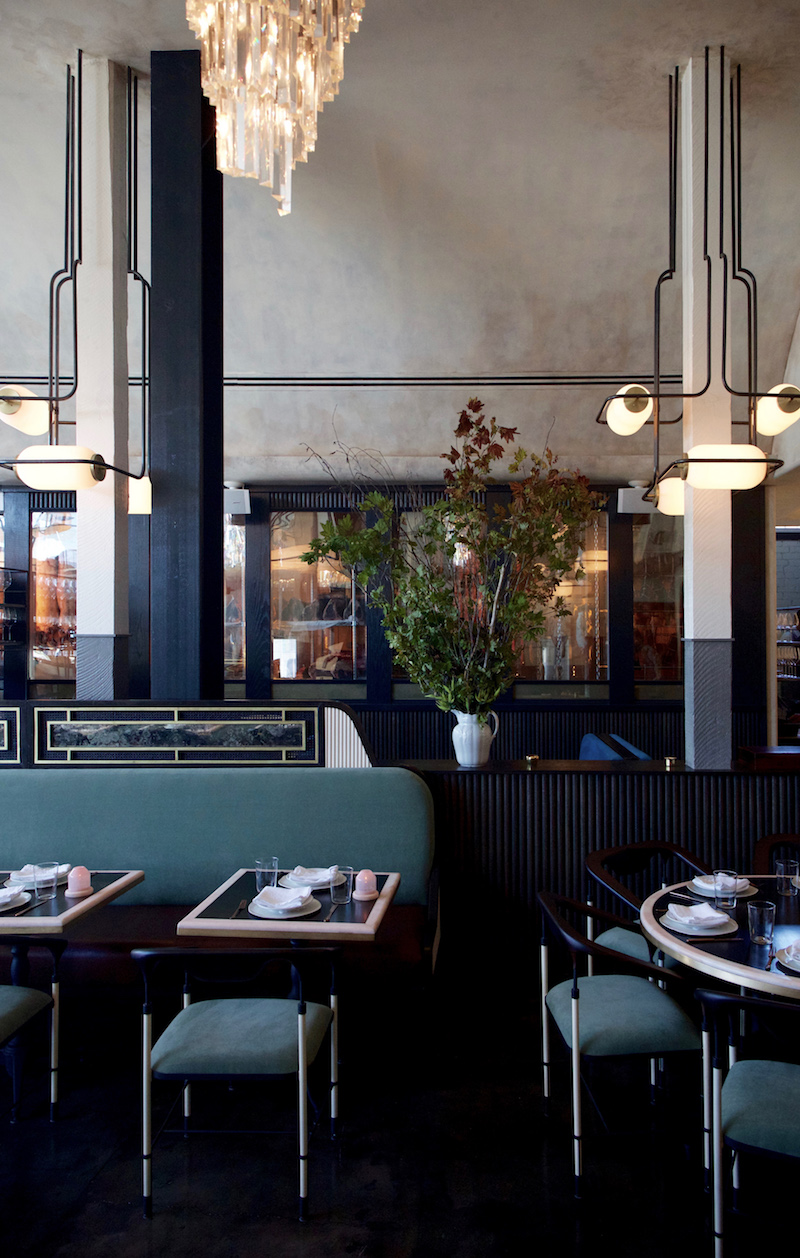 Signature touches like linear steel armatures that become both sculptural elements and supports for warm lighting, as well as bespoke tabletop votives can be seen at Gwen in Los Angeles.
Signature touches like linear steel armatures that become both sculptural elements and supports for warm lighting, as well as bespoke tabletop votives can be seen at Gwen in Los Angeles.
What’s the craziest custom work you’ve done for a project?
I think Gwen is our largest completed project to date, it was certainly the most ambitious project. There was almost 5,000 square feet for front of house. But then we just opened Elsa in Cobble Hill and I think per square foot it has the most custom work, everything in there is custom. Which is great, the client was really supportive and with us on that approach.
What is the most significant design element that affects how people feel about food?
Lighting. If you were to create a hierarchy, I think lighting and sound are probably at the top with lighting being the first. It has the most impact on the overall experience.
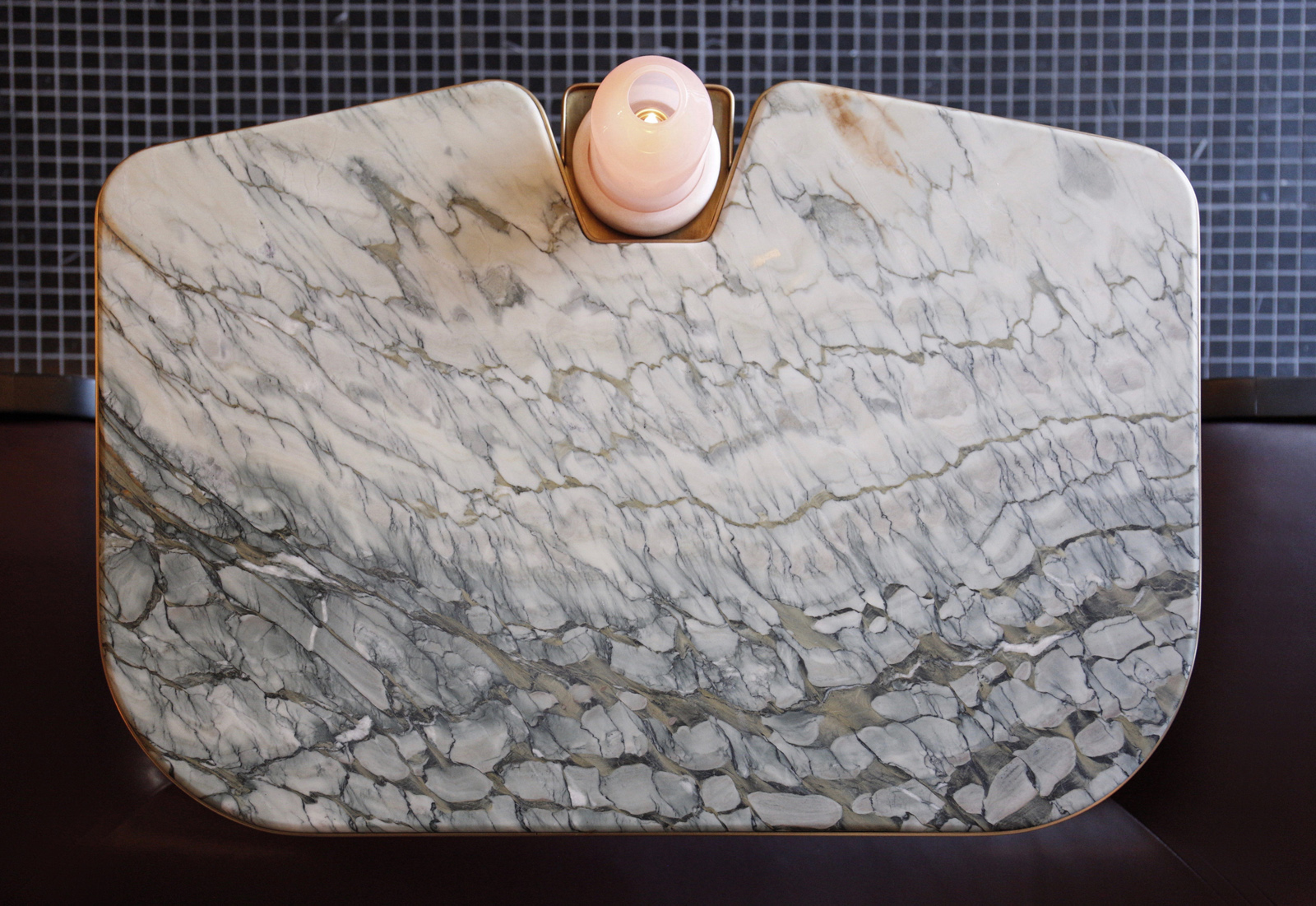
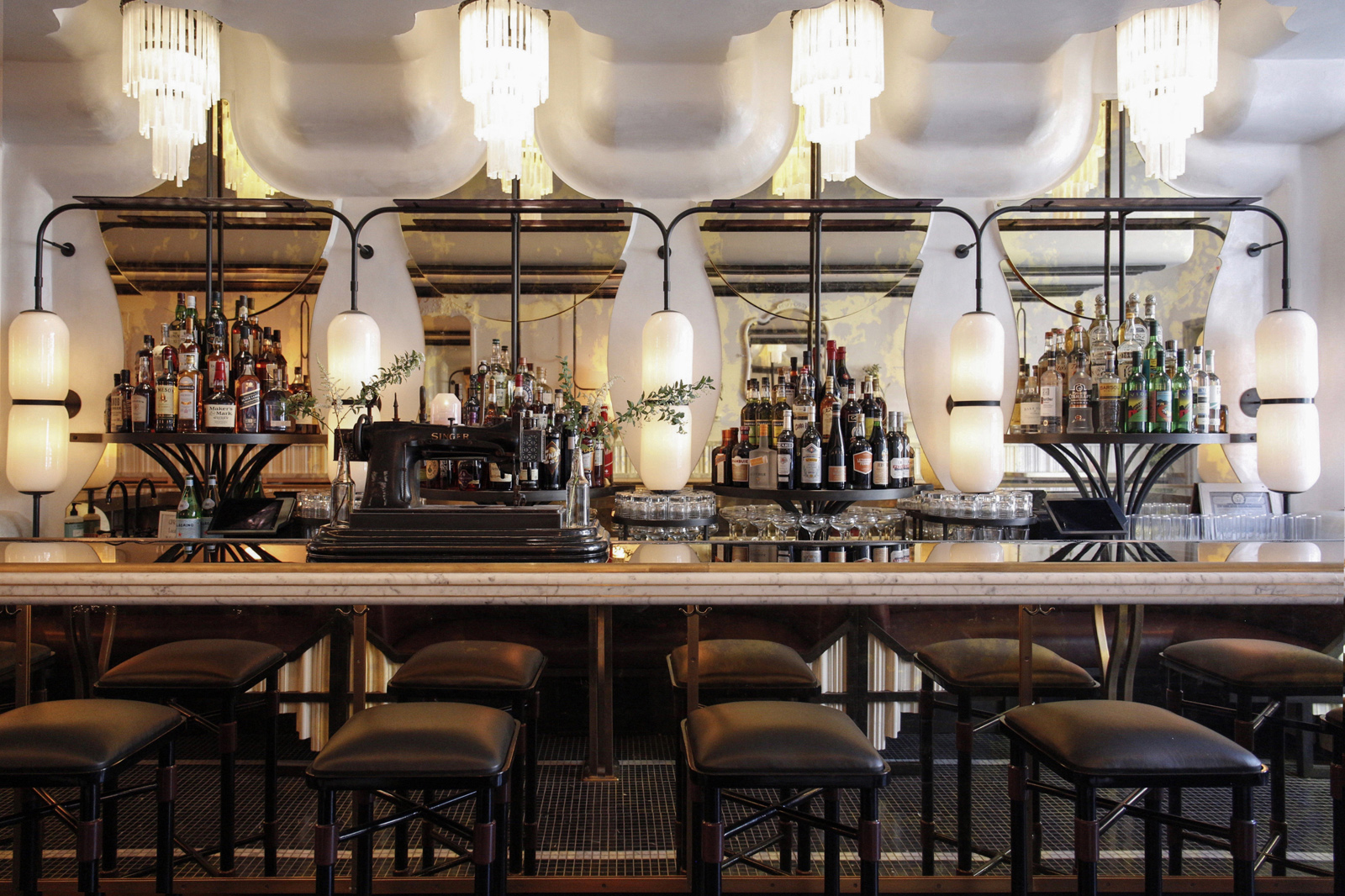
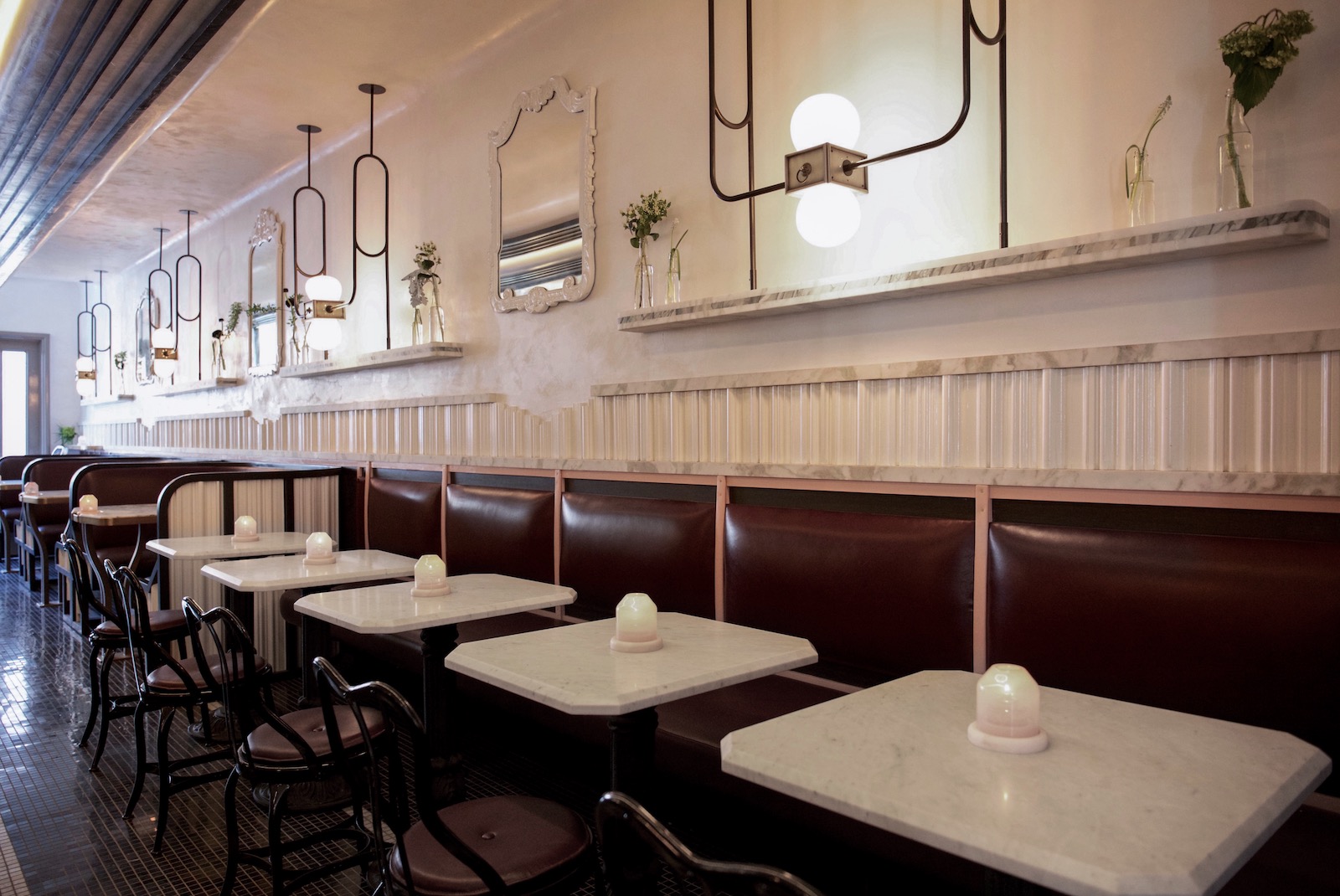 Elsa in Brooklyn. Everything in the Cobble Hill bar is custom and, “per square foot it has the most custom work,” Haslegrave tells MOLD.
Elsa in Brooklyn. Everything in the Cobble Hill bar is custom and, “per square foot it has the most custom work,” Haslegrave tells MOLD.
How has social media affected your work, or does it?
We shoot all our own photographs of our spaces, so we’ll often think about how something would look in a photograph—you do that when you’re modeling it too, you make scenes. We’ll think, “Oh, that angle is really great because you’ve got the back bar and the bar, but it also gives you a view into the dining room and the kitchen, etc.” So we definitely think in that regard but we thought in that way before Instagram. But I do think it’s really helpful; it’s great to have people see our work that way and for us to get inspiration and see what else is going on.
What’s your most unusual source for inspiration?
We make an effort as a studio to see as many different creative projects [as we can], so a lot of travel, fine art museums, movies, concerts, other bars and restaurants and design exhibitions or fairs for sure, just trying to expose ourselves to the different venues for creative expression. And then we share them with each other: once a week at our meeting we sit down and—especially if anyone did anything over the weekend—we show photos to each other. It’s really helpful because now you’re aware of like 10 more things that you wouldn’t have been otherwise.
Whose work makes you wish you’d thought of that?
Everybody here has their own preferences, but as a whole, all of my favorite contemporary designers are European, seemingly: Vincenzo De Cotiis, Joseph Dirand, India Mahdavi, Cristina Celestino, Dimore [Studio], Ilse Crawford , Patricia Urquiola, Axel Vervoordt.
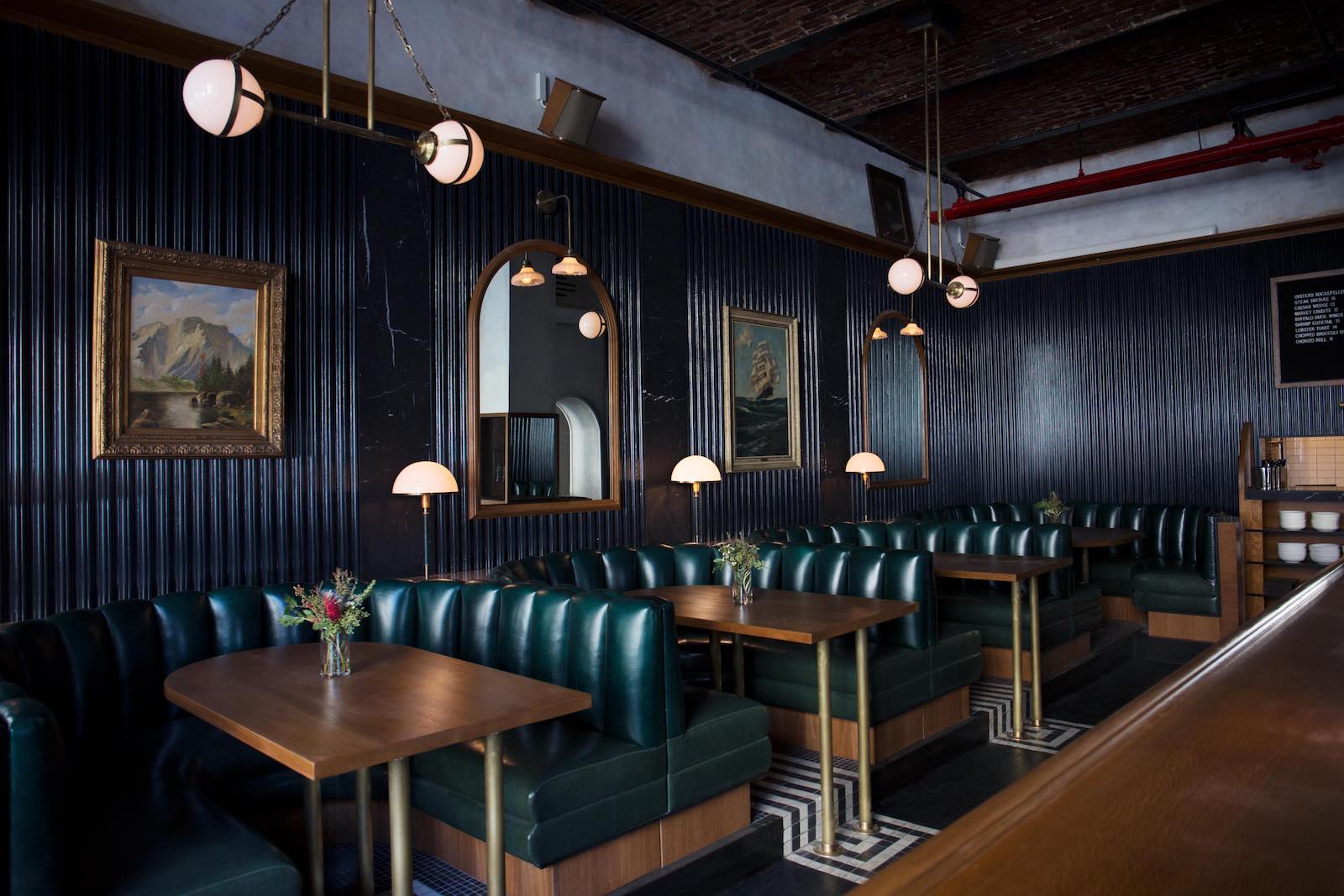 The Spaniard, a pub designed by HOME STUDIOS, recently opened in the West Village.
The Spaniard, a pub designed by HOME STUDIOS, recently opened in the West Village.
How do you envision the future of restaurant design?
I think the good answer to that is probably beyond my capabilities. But big picture, because of access to information, design is getting more diverse and nuanced and drawing from a lot of sources of insipration, which is really cool. So I just imagine that will continue.
For us in particular, we just want to keep pushing it in terms of ideas for custom elements and finishes and materials. The parameters are pretty well-defined, both in terms of code and in terms of what spaces need in order to function and be successful, but within that there’s always a lot of room for creating a new feel or a new experience. Ultimately a new vibe. All the studios that we look up to, that we respect, have a really healthy diversity among the projects that they do in terms of scale and also across platforms. If anything I think that’s what we hope the future holds.
See Oliver Haslegraves’ debut furniture and interior collection, Homework, this week at Sight Unseen OFFSITE, May 19-22 at 100 Avenue of Americas.
